Rainwater Harvesting Automation with Smart Electrical Controls: The Future of Sustainable Water Management
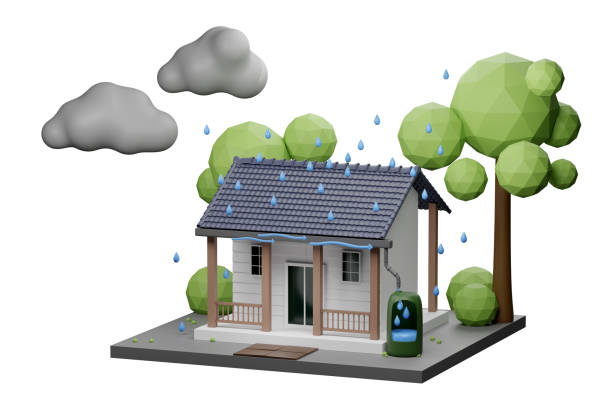
Water scarcity is a growing global concern, with increasing urbanization, climate change, and population growth putting immense pressure on freshwater resources. As a sustainable solution, rainwater harvesting (RWH) has gained significant traction in recent years. However, traditional RWH systems often face challenges like inefficient water use, manual monitoring, and maintenance issues. The integration of automation and smart electrical controls is revolutionizing rainwater harvesting, making it more efficient, reliable, and user-friendly. In this blog post, we explore the latest trends, technologies, and benefits of rainwater harvesting automation, backed by real-world examples and expert insights.
Why Automate Rainwater Harvesting?
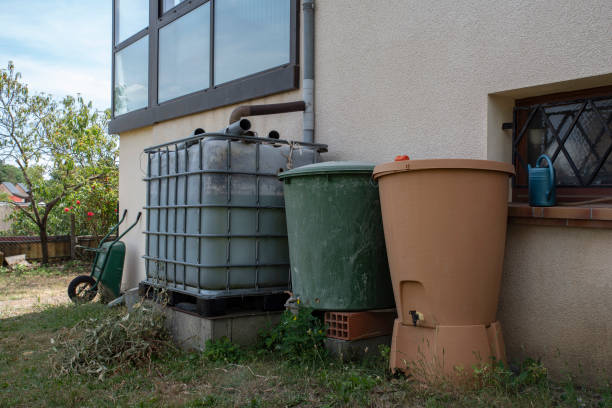
Traditional rainwater harvesting systems rely heavily on manual intervention for monitoring water levels, controlling pumps, and managing overflow. This can lead to suboptimal water usage, wastage, and increased maintenance costs. Automation addresses these challenges by:
- Optimizing water collection and storage through real-time monitoring and control.
- Reducing manual labor by automating pumps, valves, and overflow systems.
- Improving water conservation by ensuring harvested water is efficiently used.
- Enabling remote monitoring and alerts to prevent system failures.
By automating rainwater harvesting, users can maximize water savings, reduce dependency on municipal water, and contribute to environmental sustainability.
Recent Trends in Rainwater Harvesting Automation
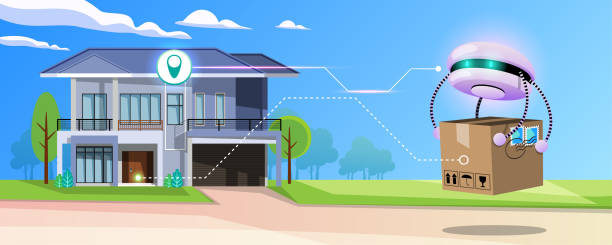
AI and Machine Learning Integration
Artificial Intelligence (AI) is transforming rainwater harvesting by analyzing weather patterns and predicting rainfall with high accuracy. AI-powered systems optimize the timing of water collection and distribution, ensuring tanks are ready to capture maximum runoff and avoid overflow. Machine learning models also help forecast water demand based on historical usage and weather data, enabling smarter decision-making for water allocation.
Smart Sensors and IoT Connectivity
Smart sensors monitor water levels, quality, soil moisture, and weather conditions in real-time. These sensors feed data to IoT-enabled controllers that automate pumps and valves, adjust irrigation schedules, and send alerts to users via mobile apps or dashboards. This connectivity allows for remote system management and proactive maintenance.
Modular and Scalable Systems
Modern rainwater harvesting solutions are increasingly modular, allowing users to expand storage capacity and integrate new components easily. Automated controls adapt to these changes, maintaining optimal system performance. Underground tanks are gaining popularity for their aesthetic appeal and reduced evaporation losses.
Integration with Smart Homes and Cities
Rainwater harvesting systems are now being integrated with smart home automation platforms and broader smart city water management initiatives. This integration supports decentralized water management, flood mitigation, and sustainable urban infrastructure development
Components of a Smart Rainwater Harvesting System
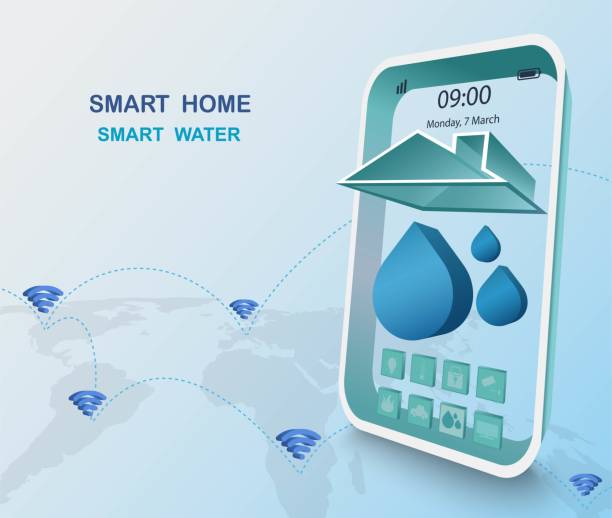
A typical automated rainwater harvesting system includes:
- Rainwater Collection: Roofs and gutters channel rainwater into storage tanks.
- Storage Tanks: Above-ground or underground tanks equipped with smart level sensors.
- Smart Electrical Controls: Automated pumps, valves, and controllers that regulate water flow based on sensor data and preset logic.
- Sensors: Rain sensors, water level sensors, soil moisture sensors, and water quality sensors.
- Connectivity: IoT modules that enable remote monitoring and control via mobile apps or web dashboards.
- Automation Logic: Algorithms that manage tank levels, prevent overflow, optimize irrigation timing, and integrate weather forecasts
Electrical Controls Used in Rainwater Harvesting Automation
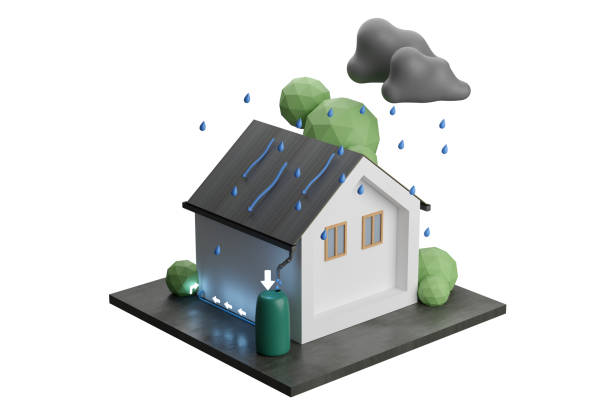
Electrical controls form the backbone of modern automated rainwater harvesting systems. They use sensors, controllers, and actuators to monitor, manage, and optimize the collection, storage, and distribution of rainwater with minimal human intervention. Here’s a simple explanation of the key electrical controls commonly used:
1. Programmable Logic Controllers (PLCs)
- Role: PLCs act as the “brain” of advanced rainwater harvesting systems. They receive inputs from various sensors and send commands to pumps, valves, and alarms.
- Features: Many PLCs come with touchscreen interfaces for easy monitoring and configuration. They can handle both digital and analog signals.
- Integration: PLCs can connect with building automation systems for remote monitoring and control, allowing users to manage their rainwater systems from anywhere.
- Examples: Rainwater Management Solutions (RMS) offers custom PLCs designed specifically for rainwater systems, including audible and visual alarms for fault detection.
2. Sensors
- Water Level Sensors: Ultrasonic or float sensors measure the volume of water in storage tanks to prevent overflow or dry running of pumps.
- Rain Sensors: Detect rainfall to automatically activate the system for water collection.
- Water Quality Sensors: pH, turbidity, and conductivity sensors monitor water safety and trigger filtration or alerts if needed.
- Soil Moisture Sensors: Used in irrigation applications to optimize water distribution based on soil needs.
3. Actuators and Motorized Valves
- Function: These electrically controlled valves regulate the flow of water between different tanks, irrigation lines, or backup water sources.
- Backup Valve Example: Motorized 3-way valves can switch between rainwater and municipal water supply automatically, ensuring continuous water availability.
4. Pumps with Electrical Controls
- Automation: Pumps are controlled based on tank water levels and irrigation demand, turning on only when needed to save energy.
- Protection: Motor current monitoring devices prevent pump overloads and extend equipment life.
5. Control Panels and Power Distribution
- Purpose: Centralized panels simplify wiring and power management for all electrical components in the system.
- Safety: Panels are designed to meet electrical standards (e.g., UL 508a) and include circuit breakers and surge protection
6. IoT and Remote Monitoring Modules
- Connectivity: Internet-enabled modules allow users to monitor system status, water levels, and alerts remotely via smartphone apps or web dashboards.
- Integration: These modules enable the rainwater system to communicate with smart home platforms and weather forecast services for predictive automation
How Smart Electrical Controls Optimize Rainwater Harvesting
Smart electrical controls make rainwater harvesting systems work more efficiently and with less effort. They use sensors and automated devices to monitor and manage the water collected from rain, ensuring it is stored and used in the best possible way. These controls help save water, reduce waste, and make the system easier to maintain.
Key Ways Smart Controls Help:
- Monitor Water Levels: Sensors check how much water is in the storage tank in real-time.
- Control Pumps and Valves Automatically: Pumps turn on or off based on water availability and need, without manual operation.
- Use Weather Data: The system adjusts based on rain forecasts to prepare for heavy rain or dry periods.
- Save Energy: Pumps run only when necessary, reducing electricity use.
- Send Alerts: If there is a problem like a leak or low water, the system notifies the user immediately.
- Allow Remote Access: Users can check and control the system from their smartphones or computers.
- Improve Water Quality: Automated filters clean the water as needed, ensuring it’s safe for use.
Real-World Examples and Case Studies
- Urban Residential Integration: Homeowners use smart rainwater harvesting systems connected to home automation platforms like Home Assistant. These systems automatically activate pumps for garden irrigation based on soil moisture and weather forecasts.
- Commercial Applications: A parking garage roof runoff harvesting project used pressure-activated pump stations and level sensors to manage irrigation without complex communication systems. Overflow lines ensured system safety during heavy rains.
- AI-Driven Systems: Some campuses and municipalities employ AI-powered rainwater harvesting that predicts rainfall and adjusts storage and distribution accordingly, enhancing water supply reliability and flood control.
How to Implement Rainwater Harvesting Automation
- Assess Water Needs and Catchment Area: Calculate potential rainwater volume based on roof size and local rainfall.
- Select Smart Components: Choose appropriate tanks, sensors, pumps, and controllers compatible with automation platforms.
- Plan System Layout: Ensure proper guttering, filtration, and storage placement.
- Install Automation Controls: Integrate IoT modules and configure automation logic for water level management, pump control, and alerts.
- Connect to Smart Home or Monitoring Systems: Use apps or dashboards for real-time monitoring and control.
- Maintenance: Regularly inspect sensors, clean filters, and update software to maintain system efficiency.
- Compliance: Check local regulations regarding rainwater harvesting and automation systems.
Frequently Asked Questions (FAQs)
Q1: What is rainwater harvesting automation?
Rainwater harvesting automation involves using smart electrical controls, sensors, and IoT technology to monitor and manage rainwater collection, storage, and usage automatically.
Q2: How do smart electrical controls improve rainwater harvesting?
They optimize water collection and distribution, reduce manual intervention, provide real-time alerts, and help prevent overflow or system failures.
Q3: Can I integrate rainwater harvesting with my smart home system?
Yes, many smart rainwater systems can connect with home automation platforms, allowing remote control and monitoring.
Q4: What sensors are used in automated rainwater systems?
Common sensors include rain sensors, water level sensors, soil moisture sensors, and water quality sensors.
Q5: Is rainwater harvesting legal in all areas?
Regulations vary by location. It is important to check local laws before installation.
Q6: How much can I save with automated rainwater harvesting?
Savings depend on system size and usage but can be significant, including reduced water bills and lower energy costs.
Q7: What maintenance is required for smart rainwater systems?
Maintenance includes sensor calibration, filter cleaning, pump inspection, and software updates.
Conclusion
Automating rainwater harvesting with smart electrical controls represents a significant leap forward in sustainable water management. By combining AI, IoT, and smart sensors, these systems offer enhanced efficiency, convenience, and environmental benefits. Whether for residential or commercial applications, smart rainwater harvesting is a future-ready solution that addresses water scarcity challenges while promoting conservation and cost savings. Embrace this technology today to make your home or business more sustainable and resilient.
Explore the latest smart rainwater harvesting solutions and automation technologies at SmartHomesBee.com and take a step towards smarter water management.